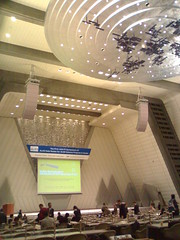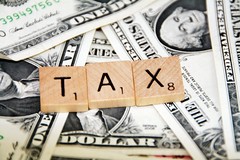Here at LGBG by PMD United, we continuously aim to assemble a team of researchers and writers dedicated to our fundamental philosophies of learning new things and sharing that knowledge. Everyday our team members converse over topics and entries, and seldom do we find and mine information on such impressive initiatives as that of the Green Global Renewable Energy Education Network (or GREEN, for short).
GREEN is a fantastically young organization that realizes the importance of today’s impact on tomorrow. Like LGBG, GREEN supports the expanse of knowledge, specifically regarding sustainability and renewable energy. However, GREEN goes one step further and works to increase awareness through more meaningful, first-hand experiences.
What exactly does GREEN do, you ask, that has us here at LGBG so impressed? Well, we believe a quick look at the organization’s early body of work can speak volumes for itself.
Say, perhaps, that someone in college is interested in pursuing further knowledge about heightened sustainability practices and renewable energy options. Suppose also that this individual prefers not the conventional ways of the classroom but rather, if given the opportunity, would opt for more hands-on learning in a heartbeat. Cue GREEN and its program.

GREEN assembles groups of highly motivated and top-performing college students from around the world to immerse them in a twelve-day, all-inclusive Costa Rican adventure. The center of attention is undoubtedly on education, and fittingly, GREEN’s program design makes skillful use of all that Costa Rica has to offer. In fact, as the current hotbed of renewable energy technologies, the country offers students the unique opportunity to learn about and experience five main types of alternative energy that power eighty percent of Costa Rica – hydroelectric, biomass, geothermal, wind and solar.
One of the major foci of the GREEN organization is supplementing typical classroom learning with a more hands-on approach, so as to further progress the students towards future career goals. The GREEN program’s outside-of-the-classroom learning experience covers career interests in business, engineering, ecology and public policy. With GREEN-assembled industry experts at the helm of all discussions and instructional sessions, and with managers, engineers, and operators heading all plant tours, students can rest assured that they are receiving a top-notch educational experience.
Students who participate in the GREEN program clearly share a passion for sustainability and renewable energies. But there is one more thing students of each and every session can agree upon – perhaps the most fulfilling aspect of the trip is teaming their passions and newfound knowledge to complete the keynote project of GREEN’s program. (The final project entails formulating their own green programs that are attainable on a university- or college-wide level, which students can potentially bring back with them and initiate at their respective institutions.) GREEN is very proud to acknowledge that, in addition to the great network of alumni the program offers, graduate students have also taken advantage of the opportunities GREEN provides by pursuing excellence in internships and entry-level positions within the sustainability programs of major corporations like GE.
Don’t be completely fooled, however. Although GREEN means business, and there is a very comprehensive list of well-planned informational activities, there is also time for play to be adequately mixed in with the work. Students have some downtime during which they can explore the beautiful landscape and activities Costa Rica has to offer. From enjoying the physical features of the landscape to delving further into cultural centers of the country, the possibilities for fun and learning prove endless.
Overall, LGBG proudly endorses, to the highest extent, the programs and initiatives set forth and carried out by GREEN. It is precisely through this kind of igniting and continually feeding the green flame of knowledge, that People Making a Difference United firmly believes the future can be changed for the better. Dedicated to that same cause, obviously, is the Green Global Renewable Energy Education Network (GREEN), and for that, we offer our sincerest praise to the organization.
To our readers, LGBG urges you to learn more of the GREEN program by visiting the official website, www.thegreenprogram.com, now.








